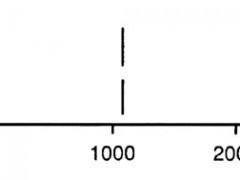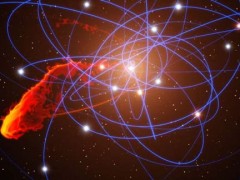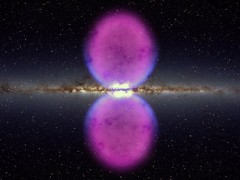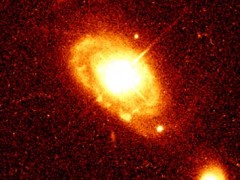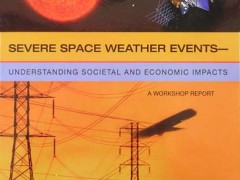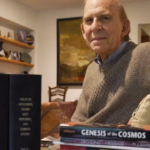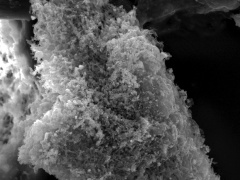Search Results for: superwaveIndependent Confirmation of the Arrival of 8 Minor Superwave Events in the past 1300 yearsIn June 2012, a group of Japanese researchers Miyake, et al. announced in Nature magazine that they had found evidence of a sharp increase in radiocarbon (1.5 percent in one year) in tree rings dating from 774 to 775 AD. This indicated that on that date the Earth had been exposed to an intense pulse of gamma rays or cosmic rays. As a cause, they ruled out that it had been caused by a solar proton event or a nearby supernova. Hambaryan and Neuhaeuser (2012) concluded instead that the C-14 spike must have been caused by an energetic astronomical event of unknown origin and tentatively proposed that it may have been due to a short gamma ray burst produced either by the merger of two white dwarfs or by the accretion induced collapse of a white dwarf. Will a superwave arrive around July 2013 and cause a widespread catastrophe?For a decade now astronomers have been tracking the progress of a dense gas cloud called G2 which now is rapidly approaching the Galactic center on a very eccentric elliptical orbit (eccentricity ~ 0.95) and is estimated to reach pericenter (the point of closest approach) around the beginning of July 2013. Tidal forces have already been observed to stretch the cloud and these forces will become increasingly strong over the next 9 months as the cloud approaches orbit pericenter at which point it is thought that they will be strong enough to completely rip the cloud apart. At this point the dispersed cloud is expected to be gravitationally drawn into the Galactic core with the consequent release of a large amount of energy in the form of cosmic rays and gamma ray emission. Galactic Superwaves and Core ExplosionsOne principal area of research that the Starburst Foundation is involved with is the investigation of Galactic superwaves, intense cosmic ray particle barrages that travel to us from the center of our Galaxy and that can last for periods of up to several thousand years. Astronomical and geological evidence indicates that the last major superwave impacted our solar system around 12,000 to 16,000 years ago and produced abrupt changes of the Earth's climate. It is estimated that approximately one or two superwaves strong enough to trigger an ice age are presently on their way to us from their birth place 23,000 light years away. There is a finite chance that one such event could arrive within the next few decades. Superwave PredictionsSuperwave Theory Predictions and their Subsequent Verification in the fields of astronomy and climatology Superwave PreparednessThere is an over 90% likelihood that a superwave will arrive in the next 400 years, with a finite chance that one could arrive in the next decade. Currently, radio astronomers are monitoring the cosmic ray synchrotron radiation activity of the Galactic core on a daily basis. They report their findings regularly in IAU (International Astronomical Union) circulars. Superwave, Essay by Dr. BloomerAverting Impending Extinction of Our Civilization by a Recurrent "Superwave" from the Galactic Center (Essay by Dr. John Bloomer, Ph.D., Aerospace Engineer) Galactic Explosions, Cosmic Dust Invasions, and Climatic ChangeAbstract GALACTIC EXPLOSIONS, COSMIC DUST INVASIONS, AND CLIMATIC CHANGE by Paul A. LaViolette The hypothesis (Galactic Explosion Hypothesis, GEH) is put forth that about every 10,000 years or so the center of our Galaxy enters an explosive phase during which it generates an outburst of cosmic rays with total particle energies on the order of 10 57 ergs or more. … Astrophysicist Paul Alex LaViolette, PhD has passed away8 November 1947 – 19 December 2022 (protothemanews.com) Paul Alex LaViolette, a Doctorate of Philosophy in Systems Science, was an astrophysicist, an inventor and a philosopher whose thinking was outside the box: a Renaissance Man. Dr. LaViolette was president of the Starburst Foundation under whose aegis he had been conducting interdisciplinary research in physics, astronomy, ecology, climatology, systems theory, psychology … Earth Engulfed by Superconducting Interstellar Dust Particles During the Last Ice AgePaper finally published after 30+ year journal battle ordeal. Samples retrieved from the ice age portion of the Camp Century, Greenland ice core show evidence that a major cosmic dust incursion episode occurred 49,000 years ago, the largest to occur in the past several hundred thousand years. Dr. Paul LaViolette, director of the Starburst Foundation, a New York based research institute, has found that over a period of at least 6 years, interstellar dust was entering the Earth's atmosphere at up to 100,000 times that of the current cosmic dust influx rate. He presents this discovery in a paper that that is appearing in the December 1st issue of Advances in Space Research. G2 Cloud Predicted to Approach Twice as Close to GCThere have been new developments in the story on the G2 Cloud. Recent observations of the G2 cloud made in the near infrared at the Keck Observatory indicate that the cloud will reach its closest approach to the Galactic center around mid March of 2014 instead of June of this year. Also the new findings indicate that G2′s orbit will take the cloud twice as close to the GC than previously thought. The distance of closest approach is now predicted to be 130 AU rather than the previous estimate of 266 AU. |
Donations |

